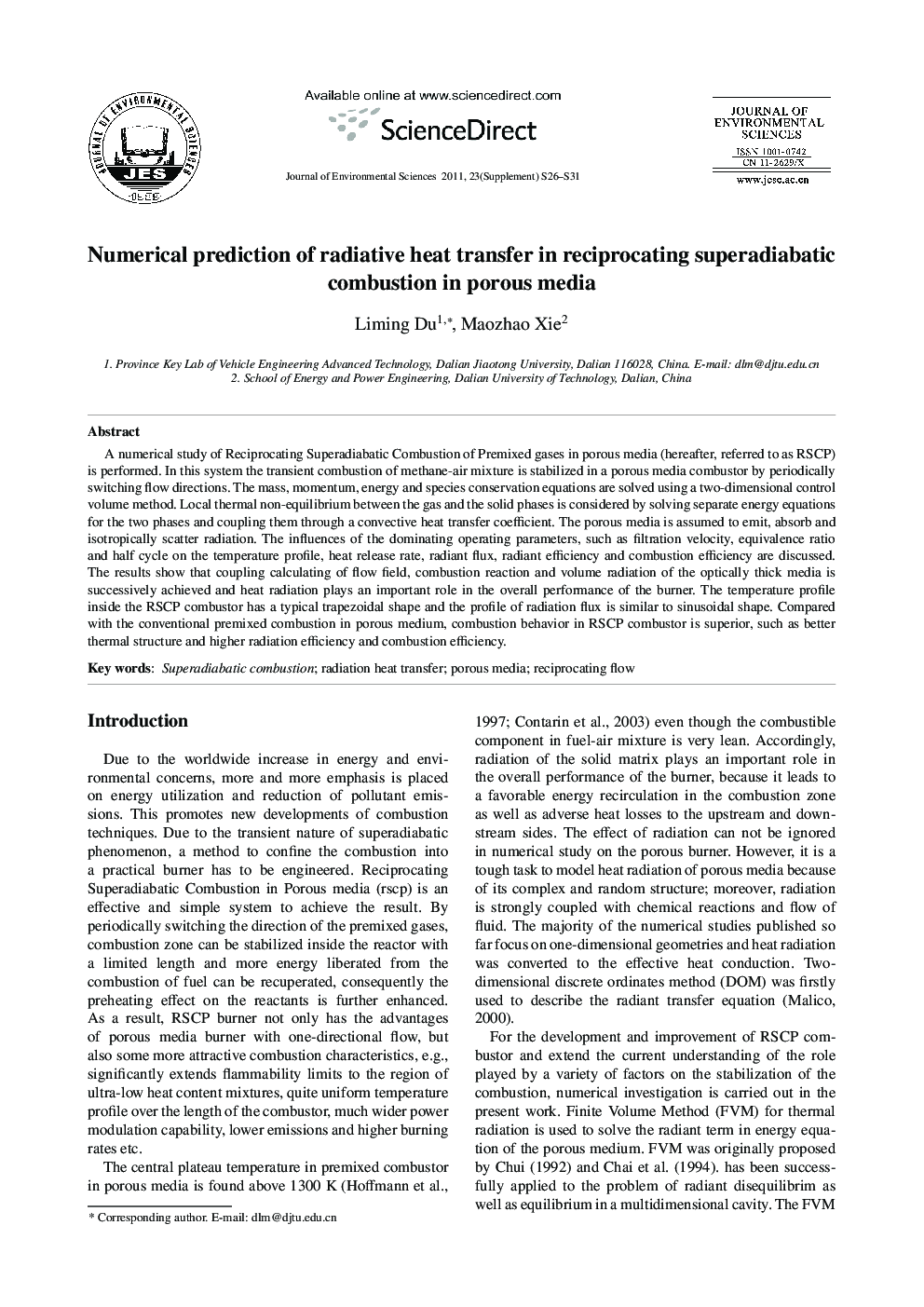| کد مقاله | کد نشریه | سال انتشار | مقاله انگلیسی | نسخه تمام متن |
|---|---|---|---|---|
| 4455697 | 1312528 | 2011 | 6 صفحه PDF | دانلود رایگان |

A numerical study of Reciprocating Superadiabatic Combustion of Premixed gases in porous media (hereafter, referred to as RSCP) is performed. In this system the transient combustion of methane-air mixture is stabilized in a porous media combustor by periodically switching flow directions. The mass, momentum, energy and species conservation equations are solved using a two-dimensional control volume method. Local thermal non-equilibrium between the gas and the solid phases is considered by solving separate energy equations for the two phases and coupling them through a convective heat transfer coefficient. The porous media is assumed to emit, absorb and isotropically scatter radiation. The influences of the dominating operating parameters, such as filtration velocity, equivalence ratio and half cycle on the temperature profile, heat release rate, radiant flux, radiant efficiency and combustion efficiency are discussed. The results show that coupling calculating of flow field, combustion reaction and volume radiation of the optically thick media is successively achieved and heat radiation plays an important role in the overall performance of the burner. The temperature profile inside the RSCP combustor has a typical trapezoidal shape and the profile of radiation flux is similar to sinusoidal shape. Compared with the conventional premixed combustion in porous medium, combustion behavior in RSCP combustor is superior, such as better thermal structure and higher radiation efficiency and combustion efficiency.
Journal: Journal of Environmental Sciences - Volume 23, Supplement, June 2011, Pages S26-S31